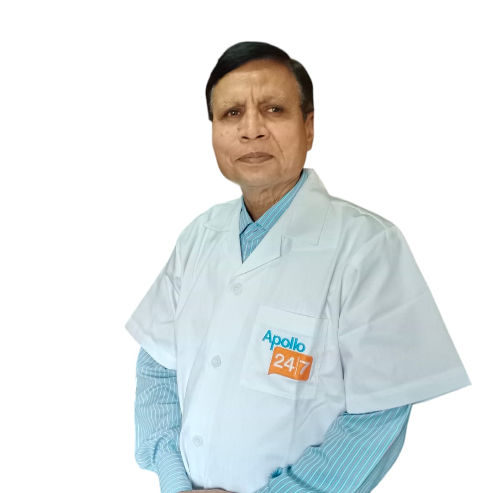How to Reduce Neck Pain: Effective Tips & Remedies
Suffering from neck pain? Discover expert tips, exercises, and home remedies to reduce neck pain and improve mobility. Get relief today!

Written by
Last updated on 3rd Jul, 2025
Neck pain is a common issue that can affect anyone, often disrupting daily activities. It can stem from various causes such as poor posture, muscle strain, or injury. Addressing neck pain early is essential to prevent it from becoming chronic. In this article, we’ll cover how to reduce neck pain through lifestyle changes, self-care practices, medical treatments, and preventive measures.
Understanding Neck Pain and Its Common Causes
Neck pain involves discomfort in the cervical spine region (the neck area) and can result from different factors. Identifying the root cause of neck pain is important for effective treatment.
Common Causes of Neck Pain:
Poor Posture: Slouching while sitting or standing for long periods can lead to muscle strain in the neck.
Neck Injuries: Whiplash, falls, or other accidents can cause sprains, strains, or misalignments in the neck.
Muscle Strain: Overuse of neck muscles during physical activities or even sleeping in a bad position can strain muscles.
Degenerative Conditions: Conditions like osteoarthritis or cervical disc degeneration can contribute to chronic neck pain.
When to Seek Medical Advice?
Most neck pain can be treated at home, but in some cases, you should seek medical attention:
If the pain persists for more than a few days
If you experience numbness, tingling, or weakness in your arms
If pain is the result of an accident or injury
If the pain is associated with a headache or loss of mobility
Common Diagnostic Tests:
X-rays: To check for fractures or misalignment
MRI: To detect disc herniation or nerve compression
CT scan: Provides a detailed view of bones and tissues
Lifestyle Modifications to Reduce Neck Pain
1. Proper Ergonomics
The setup of your workstation plays a crucial role in preventing neck pain. Small changes can make a big difference:
Adjust Your Chair: Your chair should support your lower back and allow your feet to rest flat on the floor.
Monitor Height: Position the top of your monitor screen at or slightly below eye level to avoid straining your neck.
Keyboard Position: Keep your arms at a 90-degree angle while typing to minimize strain on your neck and shoulders.\
2. Regular Physical Activity and Neck Exercises
Staying active is one of the most effective ways to prevent neck pain. Exercises that strengthen the neck, shoulders, and upper back muscles help alleviate strain:
Neck Tilts: Slowly tilt your head to each side and hold for 10-20 seconds to stretch the muscles
Shoulder Shrugs: Raise both shoulders towards your ears, hold for a few seconds, then relax.
Upper Back Strengthening: Exercises such as rowing or wall angels strengthen the muscles supporting the neck.
Home Remedies and Self-Care for Neck Pain
1. Heat and Cold Therapy
Both heat and cold therapy can provide immediate relief for neck pain:
Cold Therapy: Apply an ice pack wrapped in a towel for 10-15 minutes to reduce inflammation.
Heat Therapy: Use a warm compress or heating pad to relax tight muscles and improve circulation.
2. Gentle Massage and Stretching
Massage helps relieve muscle tension and promotes relaxation. If professional massage isn't available, try self-massage:
Use your hands to gently massage the neck muscles, or use a foam roller to roll out tight areas.
Stretching can increase flexibility and reduce stiffness. Be gentle and never force your neck into uncomfortable positions.
3. Proper Sleep Posture
Sleep posture significantly impacts neck health. To avoid neck pain, use a pillow that supports the natural curve of your neck and ensures proper spinal alignment. Try sleeping on your back or side rather than on your stomach.
Medical Treatments for Neck Pain
1. Pain Relief Medications
For short-term relief, over-the-counter (OTC) pain relievers like ibuprofen or acetaminophen can help reduce pain and inflammation. For more intense or chronic pain, consult a doctor about muscle relaxants or prescription pain medications.
2. Physiotherapy and Chiropractic Care
Physiotherapy: A physiotherapist can create a customized rehabilitation plan that includes exercises to improve flexibility, strength, and posture.
Chiropractic Adjustments: Chiropractic care focuses on spinal manipulation to address misalignments and relieve pain.
Alternative Therapies for Neck Pain Relief
1. Acupuncture
Acupuncture is an alternative therapy that may help with chronic neck pain. Fine needles are inserted into specific points on the body to relieve tension and stimulate the body's natural healing processes.
2. Yoga and Meditation
Practicing yoga can enhance flexibility, reduce muscle tension, and improve posture, all of which can alleviate neck pain. Focus on poses that stretch the neck, shoulders, and upper back. Child’s Pose and Cat-Cow stretches are great for neck mobility.
1. Child’s Pose (Balasana)
Child’s Pose is a gentle resting yoga pose that stretches the spine, neck, and shoulders while promoting relaxation and deep breathing.
How to Do Child’s Pose:
Start by kneeling on the floor with your big toes touching and knees either together or hip-width apart.
Sit back onto your heels and extend your arms forward, lowering your chest toward the ground
Rest your forehead on the mat and let your neck relax.
Breathe deeply, feeling a gentle stretch in your spine, shoulders, and neck.
Hold the pose for 30 seconds to a few minutes, focusing on slow, steady breathing.
To release, gently walk your hands back and sit up.
2. Cat-Cow Stretch (Marjaryasana-Bitilasana)
Cat-Cow is a dynamic movement that improves spinal flexibility and strengthens the neck muscles through controlled motion.
How to Do Cat-Cow Stretch:
Begin in a tabletop position with your hands under your shoulders and knees under your hips.
Cow Pose (Bitilasana): Inhale, arch your back, drop your belly toward the floor, and lift your head and tailbone while looking forward.
Cat Pose (Marjaryasana): Exhale, round your back, tuck your chin toward your chest, and draw your belly button inward.
Continue flowing between these two poses for 5–10 breaths, synchronizing movement with breath.
Return to a neutral spine when finished.
Both of these asanas are excellent for improving neck mobility, relieving tension, and promoting overall spinal health.
Preventative Measures for Neck Pain
1. Maintain Good Posture
Good posture is key to preventing neck pain. Whether you're sitting, standing, or walking, make sure your head is aligned with your spine:
When sitting, avoid slouching, and ensure that your back is supported with proper lumbar support.
When standing, keep your shoulders back and avoid craning your neck forward.
2. Take Frequent Breaks
For those who sit for long periods, take frequent breaks to stand up, stretch, and walk around. Every 30-60 minutes, stand, move, and stretch to keep your neck and body from becoming stiff.
3. Strengthen the Neck and Upper Back
Perform regular neck and upper back strengthening exercises. Stronger muscles provide better support for your spine, reducing the risk of pain.
When to Consider Surgery?
Surgery for neck pain is typically a last resort, considered when other treatments haven’t worked or if there is severe nerve compression. Surgical options include:
Discectomy: Removal of a damaged disc in the neck
Spinal Fusion: Fusing two or more vertebrae together to stabilize the spine
Artificial Disc Replacement: Replacing a damaged disc with an artificial one
Your doctor will consider surgery if:
The pain is unbearable or disabling
There’s significant nerve damage or weakness in the arms
Conservative treatments have not worked
Conclusion
Neck pain can be debilitating, but with the right treatment and preventive measures, it can be managed effectively. By making simple lifestyle adjustments, incorporating regular physical activity, using home remedies, and seeking medical advice when necessary, you can reduce neck pain and prevent future discomfort.
Remember to pay attention to your posture, stay active, and avoid excessive strain on your neck. If the pain persists or worsens, seeking medical guidance early can help prevent long-term complications.
Consult Top Orthopaedician
Consult Top Orthopaedician

Dr. Akshay Shetty T
Orthopaedician
9 Years • MBBS, MS (Orthopaedics)
Bengaluru
WellnessVibes Multispeciality Clinic, Bengaluru

Dr. Aniruddha Deshmukh
Orthopaedician
10 Years • MBBS, Dip (Orthopaedics), DNB (Orthopaedics)
Pune
Dr. Aniruddha's advance ortho and polyclinic, Pune

Dr. Manoj Dinkar
Orthopaedician
15 Years • MBBS, Dip (Orthopaedics)
New Delhi
THE DOCTORS NESST, New Delhi
Dr. Piyush Joshi
Orthopaedician
9 Years • MBBS, MS (Orthopedic), ASSI
Kolkata
GRD POLYCLINIC, Kolkata

Dr. Padam Singh Gautam
General Physician/ Internal Medicine Specialist
43 Years • M.B.B.S (WARDHA M. S.), F.A.G.E. (MANIPAL), F.A.I.M.S. (Pb.), M.A.I.M.S. (Pb.), M.R.S.H. (LONDON)
Noida
Dr Padam Singh Gautam Fracture Clinic, Noida
(50+ Patients)
